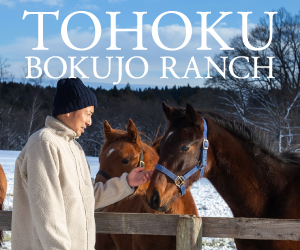JAPAN SOY SAUCE ASSOCIATION
A VERSATILE INGREDIENT
FROM THE ‘SHOYU ISLANDS’ TO THE WORLD
Japanese soy sauce is gaining popularity as pro and amateur chefs explore the fundamental flavoring’s potential
Soy sauce is the foundation of Japanese cuisine, and its global popularity is surging thanks to the boom in Japanese food culture. In 2013, the year that UNESCO designated washoku as an Intangible Cultural Heritage, there were fewer than 55,000 Japanese restaurants outside Japan. By 2023, that number had risen to nearly 190,000. As Japanese cuisine continues to advance and win new fans, worldwide interest in shoyu, as it is known in Japanese, is on the rise.
The history of soy sauce spans millennia. In ancient China, foods like meat and grain were widely fermented, and these techniques eventually reached Japan. It is thought that soy sauce production developed out of techniques for fermenting soy beans and grains with salt. Surviving records of Japanese court banquets from the eighth to 12th centuries indicate that each guest received a set of four seasonings that could be used as preferred — salt, sake, vinegar and a paste called hishio, which is thought to have been similar to present-day soy sauce or miso. By the late 16th century, a seasoning not too different from modern soy sauce came into use in Japan. In the following centuries, variations reflecting regional food cultures emerged.
According to Setsuya Hannya, managing director of the Japan Soy Sauce Association, soy sauce has three main aspects: color, flavor and aroma. Soybean proteins and wheat starches are the main elements, and as they ferment and mature, they develop complex flavors, colors and aromatic compounds that give soy sauce its characteristic color and bouquet. “The way they interact with each other during the extended fermentation process produces a harmonious balance of taste and aroma,” Hannya said.
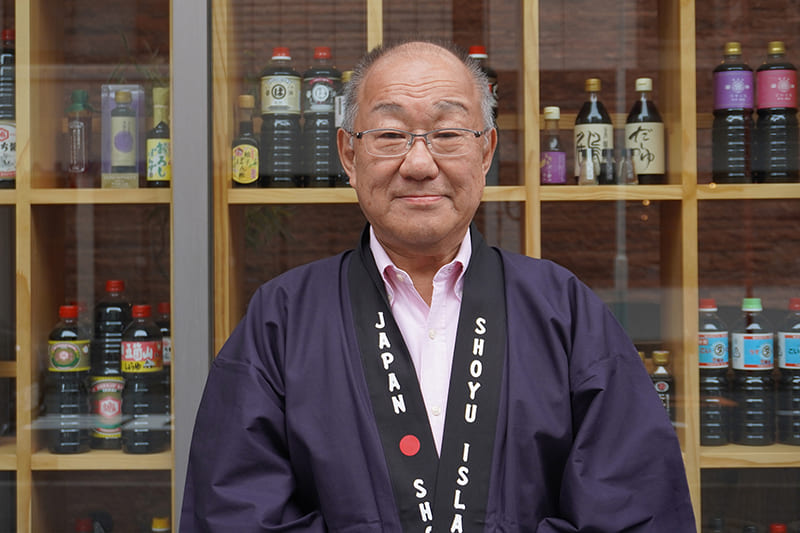
JUNYA KIYONO
It is this complex harmony, Hannya maintains, that gives soy sauce the ability to enhance the flavor of so many dishes.
To produce soy sauce, a batch of steamed soybeans and roasted wheat is “inoculated” with a small amount of kōji mold (a starter culture), which is allowed to spread until it completely covers the mixture. In this stage, temperature and humidity are carefully controlled by veteran brewmasters, with air periodically allowed to enter the container.
The finished mixture, known as kōji, is then combined with brine to create a mash called moromi. The salt in the brine, which gives soy sauce its characteristic salty taste, suppresses undesirable microorganisms while allowing beneficial ones to thrive.
It is at this stage that fermentation begins. The moromi is stirred continuously and aged for six to eight months, or up to two years if fermenting at ambient temperatures. This patient process allows mold, yeast and lactic acid bacteria to do their work. The specific varieties and amounts of microorganisms vary by brewery and influence flavor and aroma in subtle ways.
Pressing the mature moromi yields unpasteurized, or raw, soy sauce, which is typically heat-treated to halt microbial activity and sterilize the liquid ahead of final bottling. Alternatively, it can be filtered without heating to remove microorganisms and sold raw. As these microbial processes confer the unique characteristics of each brewery upon the sauce, each has its own signature flavor and aroma. Enjoying the variety of flavors available from Japan’s 1,035 soy sauce producers, and selecting different types for specific purposes, is one way to appreciate its diversity.
Not soy sauce, but shoyu
Because Japanese soy sauce has distinctive characteristics, the Japan Soy Sauce Association often uses its Japanese name when addressing international audiences to distinguish it from soy sauce produced elsewhere.
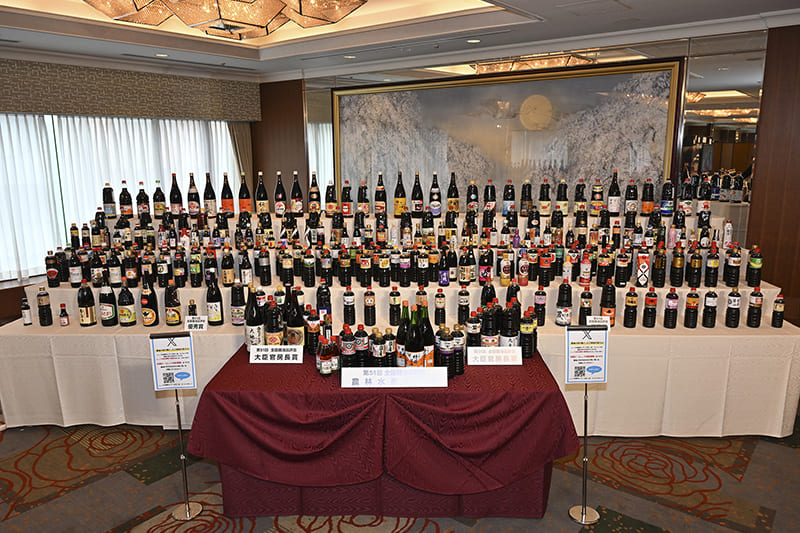
Hannya cited diversity as one of the special features of shoyu. The Agriculture Ministry divides it into five types: koikuchi (common), usukuchi (light-colored), saishikomi (refermented), tamari (full-bodied) and shiro (pale). Each type is best suited to particular uses and preferences.
The most popular variety in Japan is koikuchi, which is brewed from roughly equal amounts of soybeans and wheat. Its deep flavor, mouth-watering aroma and bright crimson-orange color give it wide appeal in cooking or at the table. As a general-purpose condiment, koikuchi accounts for over 80% of domestic soy sauce production.
Usukuchi shoyu, a light-colored variety from western Japan, is essential to the Kansai region’s food culture. As Kansai dishes began to spread throughout Japan, demand for usukuchi rose, and today it is produced outside Kansai as well. Though the basic production method is not too different from that for koikuchi, extra salt is added to lighten the color. Amazake, a sweet, fermented rice drink, also goes into the mash to produce a mellower flavor. At around 11% of total production, however, usukuchi stands a distant second to koikuchi.
Tamari shoyu is mainly produced in the Chubu region, which comprises central Honshu. It is darker and more viscous than koikuchi, and its umami-rich flavor and unique aroma are more intense, making it a good match with sashimi and sushi. The primary ingredient used in tamari production is soybeans, with little to no wheat. Wheat-free tamari is suitable for gluten-free diets and is very popular outside Japan. Around 2% of the shoyu produced in Japan is tamari.
Born in Yamaguchi Prefecture, saishikomi shoyu is widely produced in the Sanin region and northern Kyushu. Many soy sauces are brewed by mixing brine with kōji, but saishikomi uses raw soy sauce instead of brine, making it much darker and more strongly flavored. Using soy sauce to make soy sauce in effect involves a double round of fermentation, thus the appellation “refermented.” Around 1% of Japan’s shoyu production is saishikomi.
Shiro shoyu, originally from Aichi Prefecture, is a pale amber variety, even lighter in color than usukuchi. The main ingredient is wheat, with a minimal amount of soybeans. Sporting a mild but notably sweet flavor and a distinct aroma, shiro accounts for less than 1% of soy sauce brewed in Japan.
Even among these five types of soy sauce, each of which calls for a different approach, brewers often approach their craft in their own way. The traditional method known as honjozo (standard brewing) yields around 90% of the shoyu produced in Japan. But a brewer may also take a hybrid approach, adding amino acid solutions to the moromi midway through the process and continuing fermentation and aging for a month or more while stirring it. Adding amino acid solutions or other ingredients to raw honjozo soy sauce is yet another hybrid approach. All these techniques enhance the umami that is characteristic of the final product.
Along with the sheer variety of shoyu available in the country, there is a wide range of seasoning products based on the sauce as well, with each formulated for a specific culinary use. These include ponzu shoyu (soy sauce blended with citrus juice and vinegar), kaki shoyu (soy sauce with oyster extract), kombu shoyu (soy sauce with kelp umami) and a dizzying array of products for seasoning noodles and other dishes that appear frequently on Japanese tables.
A sauce for each cuisine
Hannya noted that Japan’s tremendously varied regional food cultures are behind the diversity in shoyu.
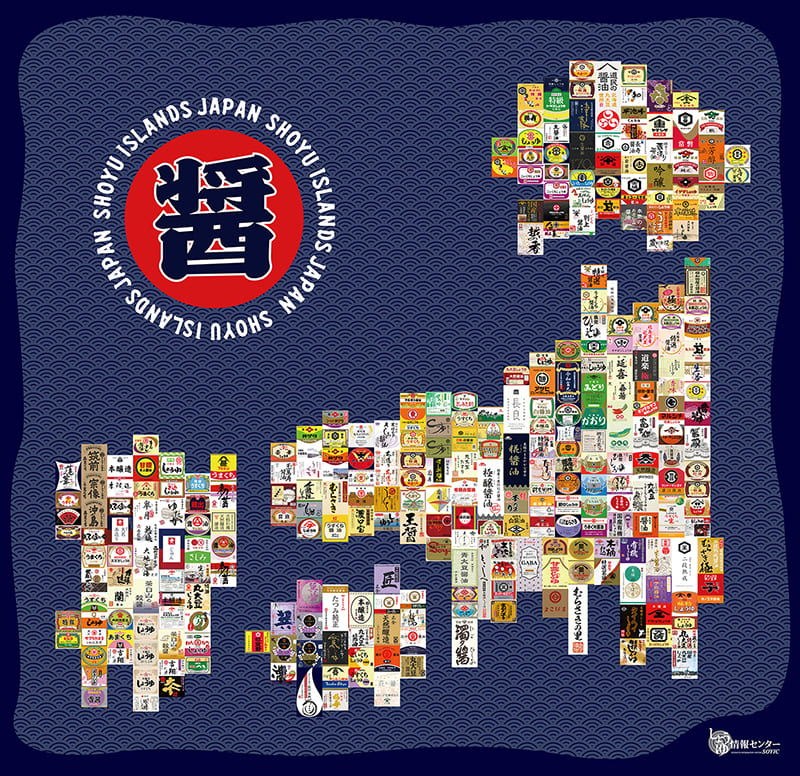
“Japan has 47 prefectures. Today, with the exception of Okinawa, every prefecture has at least one soy sauce producer. The number of brewers varies by region, but there are over 1,000 soy sauce producers nationwide, from major producers to microbreweries. Just as Japanese cuisine differs markedly from region to region, so do the soy sauces that support it. A rich variety of soy sauces is produced and consumed across the country, with each one deeply rooted in the region’s climate, customs and culture, and of course its culinary traditions.”
Hannya also pointed to the unmatched versatility of soy sauce.
“This is an all-purpose seasoning that works well in almost any culinary setting and application, including dipping, topping, grilling and simmering,” he said, adding that it complements a wide range of cuisines and can even be used in sweets.
Hannya further noted that soy sauce has a wide range of functional properties that make it ideal for many cooking applications. Even a small amount can boost flavor, whether during prep or at the finishing stage. In addition, shoyu neutralizes fish odors, making it ideal for sashimi and grilled fish. When mixed with ingredients containing sugar and heated, such as teriyaki sauce or yakitori dipping sauce, it browns beautifully and its aroma stimulates the appetite. Its salt content and acidity have bacteriostatic properties that promote food preservation, allowing pickles made with soy sauce, for example, to stay fresh longer. Soy sauce can also heighten perceived sweetness and reduce perceived saltiness. And when added to dashi, it boosts the already strong umami of the broth even further, creating an ideal dipping sauce for noodles or tempura. The broad advantages offered by soy sauce are what make it ideal for so many chefs.
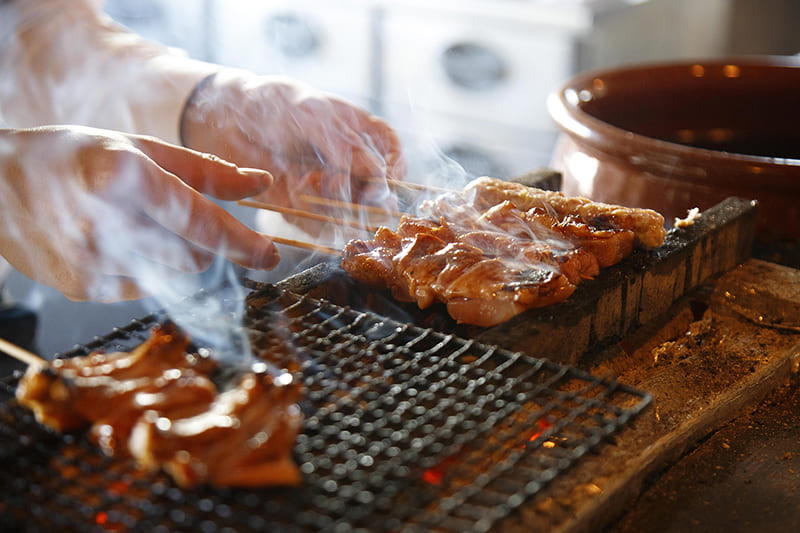
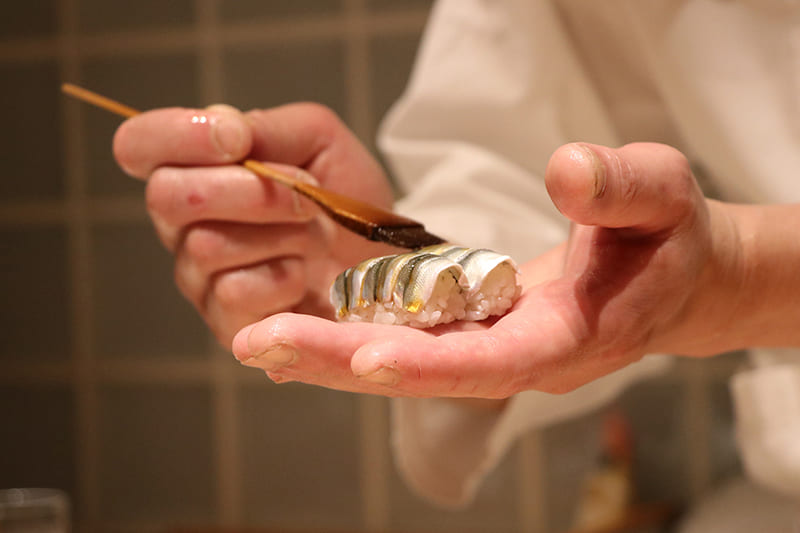
GETTY IMAGES
Spreading around the world
According to Hannya, international reach is the third distinctive feature of Japanese soy sauce.
“Full-scale entry of Japanese soy sauce into international markets began in 1957, when Kikkoman, Japan’s largest soy sauce producer, established a sales company in the U.S. Kikkoman eventually started producing soy sauce in the U.S., and awareness of the flavor of Japanese soy sauce started to spread across America. Today, there are six Japanese soy sauce producers with overseas breweries, producing soy sauce at 13 locations in eight countries and regions.”
Presently, Japan produces 680,000 kiloliters of the sauce domestically, while international demand, which is met by local production and exports from Japan, amounts to roughly half that volume. Efforts to expand production and consumption beyond Japan’s shores have had a major impact in promoting the internationalization of this iconic seasoning. Outside Japan, Hannya said, soy sauce is considered such a compelling pairing with meat dishes that it gave rise to teriyaki sauce, a soy sauce-based creation that appears on menus in all sorts of overseas eating establishments.
Hannya also noted that this condiment has become most at home in the U.S., with roughly 60% of American households keeping a bottle on hand, while many European chefs, including top names in France, are increasingly using soy sauce to add a hint of Japanese flavor to their dishes.
To understand the appeal of soy sauce, the fact that it’s fermented is impossible to overlook.
“People don’t create foods like soy sauce,” Hannya said. “The real producers are the microorganisms — mold, yeast and lactic acid bacteria working over time. Humans simply create and maintain environments where these microorganisms can thrive. No two soy sauce brewers use identical kinds and amounts of microorganisms. That diversity drives soy sauce’s richness and its vast diversity of flavor profiles.”
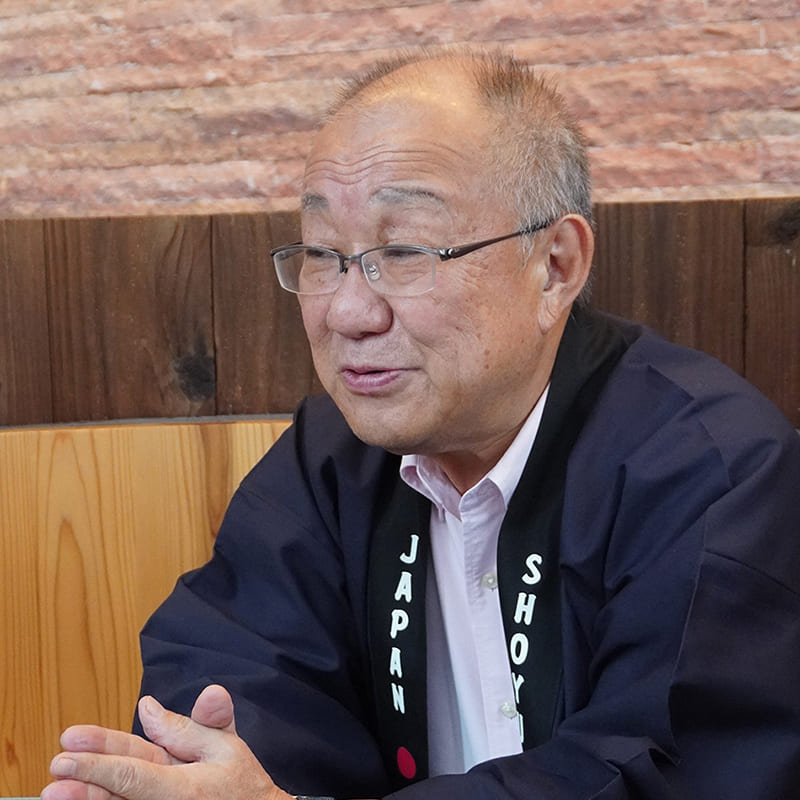
JUNYA KIYONO
Challenges, today and tomorrow
Japan’s soy sauce brewers are keepers of an iconic element of Japanese culture. Yet the industry is facing a serious challenge: a shortage of successors. “There are over 1,000 soy sauce breweries of all sizes, but many brewers say they have no successor. If no successor is found, those producers will simply go out of existence,” Hannya warned.
The ripple effects of this crisis threaten Japan’s regional food cultures. Each region has its deeply rooted culinary traditions, ways of using locally sourced ingredients and seasonings, and locally produced soy sauce plays a vital overall role. As Hannya noted, “If a brewer that is important to the community has to close down, a pillar supporting that region’s food culture disappears, and the local cuisine may disappear with it.”
But the appeal of soy sauce is undiminished, and it will go on attracting those who seek authentic value. “The Japan Soy Sauce Association is working to connect notable smaller soy sauce brewers in Japan with international consumers. As part of this effort, it is our goal to boost the number of producers who generate more than 10% of their sales from exports to over 100 companies by 2030,” Hannya said.
Achieving that goal requires social settings that bring together brewers and people who can best appreciate their products. International exhibitions to introduce Japanese soy sauce to food industry professionals are one such example. In the past year, 14 soy sauce producers participated in the SIAL Paris food exhibition held in October 2024. The next month, 10 exhibited at the Japanese Food Culture Association’s Japanese Food Expo 2024 in Los Angeles, and four at the JFCA Expo in New York. Eleven soy sauce producers were featured at the Sirha Lyon food exhibition in January 2025. Foodex Japan, one of Asia’s largest food and beverage exhibitions, was held in Tokyo in March. There, the National Federation of Soy Sauce Manufacturers Cooperatives exhibited at a booth where small and midsize soy sauce makers from across Japan showcased their signature products.
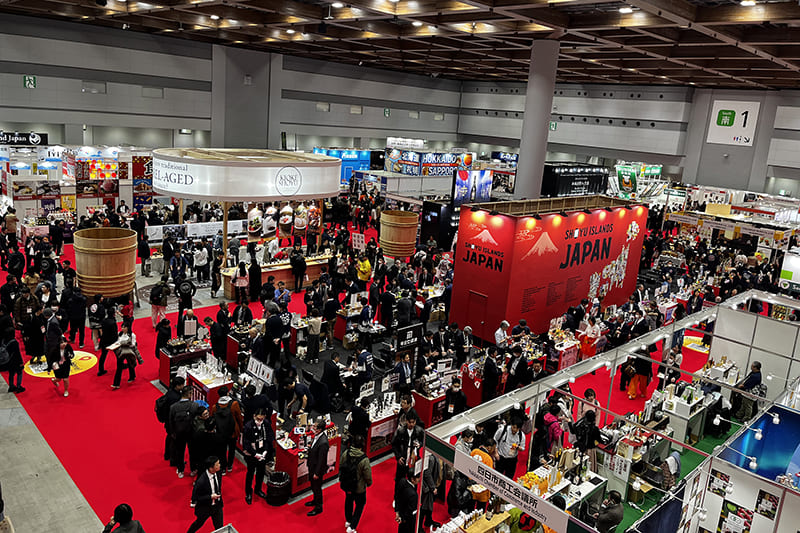
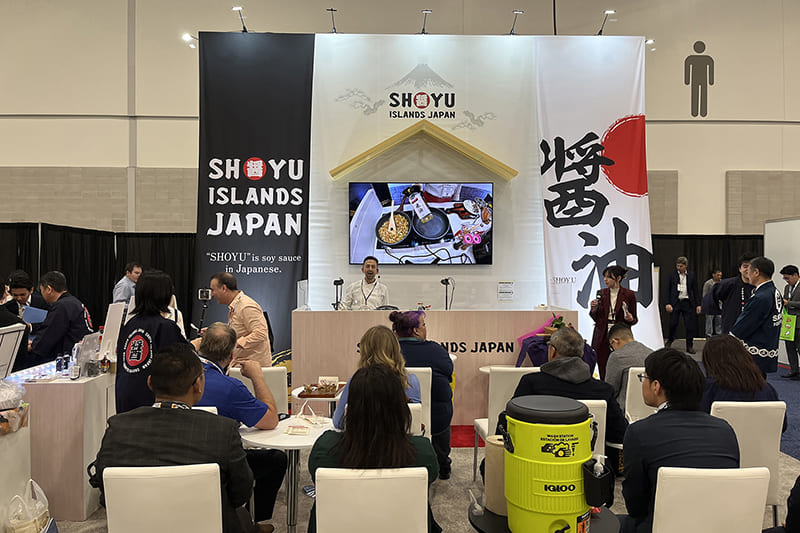
Hannya concluded: “There is no single best soy sauce. Across Japan, every region boasts its unique sauces, each shaped by centuries of history and remarkable diversity. Japan is quite literally the ‘Shoyu Islands.’ And just as they would at wineries or sake breweries, I encourage people to tour soy sauce breweries, experience their traditions firsthand and discover the unique flavors of soy sauce for themselves.”
JAPAN SOY SAUCE ASSOCIATION: https://www.soysauce.or.jp/en






